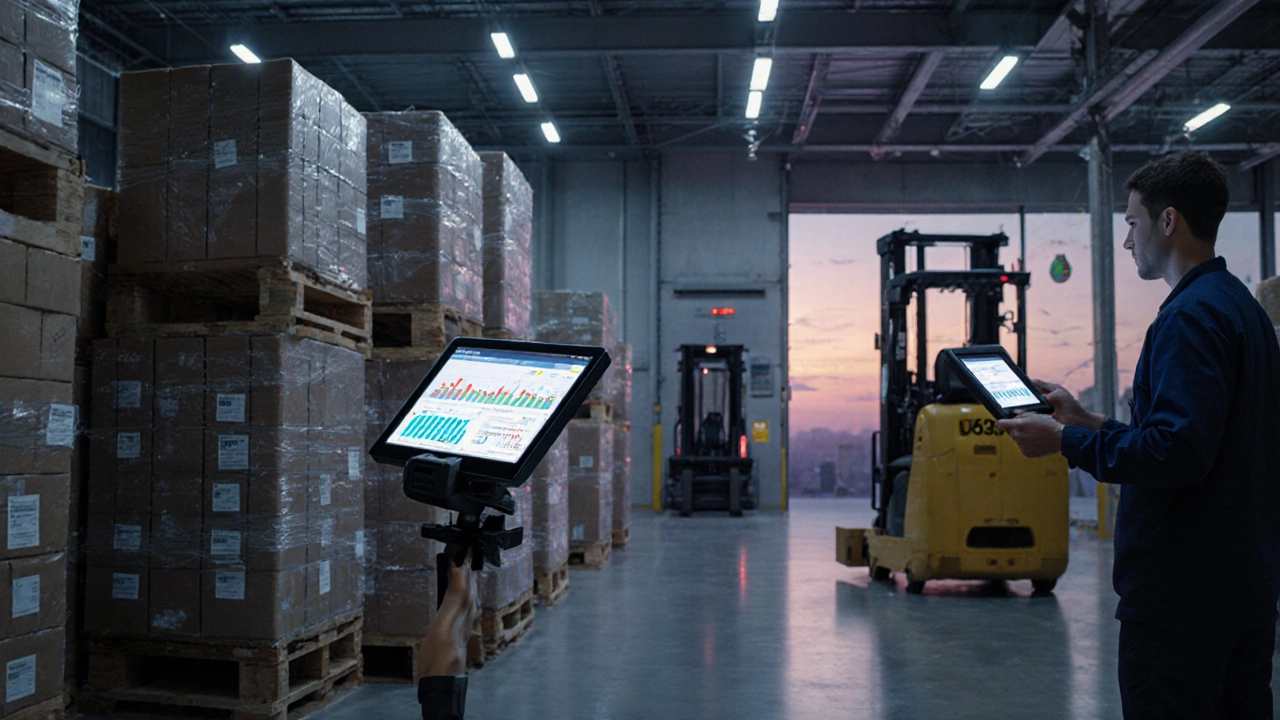Logistics Software: How It Can Transform Your Business
Ever feel like your deliveries are a guessing game? The right logistics software turns chaos into a clear, step‑by‑step process. It lets you see where every parcel is, plan routes that save fuel, and keep inventory in check—all from a single screen. No more endless phone calls or spreadsheets; you get real‑time data that helps you make smarter moves fast.
Key Features to Look For
First up, make sure the platform offers live tracking. When you can watch a truck’s location on a map, you can tell customers exactly when to expect their order. Next, inventory visibility is a must. A good warehouse management system (WMS) alerts you when stock runs low, so you never run out of top‑selling items. Don’t forget route optimization – the software should crunch traffic, delivery windows, and vehicle capacity to suggest the fastest, cheapest path. Finally, integration with your existing ERP or accounting tools saves time and reduces errors.
Choosing the Right System
Start by listing your biggest pain points. Is it missed delivery deadlines, out‑of‑stock items, or manual paperwork? Then match those issues to software features. Most vendors offer a free demo; use it to test the dashboard, check how easy it is to add new users, and see if the reporting feels intuitive. Pricing models vary – some charge per vehicle, others per user or transaction. Factor in hidden costs like setup fees or custom integrations before you sign the contract.
Real‑world examples show the impact. A small e‑commerce shop switched to a cloud‑based logistics suite and cut delivery times by 30%, while their shipping costs dropped 12% thanks to smarter route planning. A mid‑size distributor used the same tool to automate stock re‑orders, eliminating stock‑outs completely. The common thread? Visibility and automation – the software does the heavy lifting so staff can focus on customers.
Implementation doesn’t have to be a nightmare. Begin with a pilot on one warehouse or a single fleet, gather feedback, then roll out gradually. Train your team with short video tutorials instead of long manuals; practice makes perfect. Keep an eye on key metrics – on‑time delivery rate, average route cost, and inventory turnover – to measure success and tweak settings.
Bottom line: good logistics software is like a digital traffic controller for your whole supply chain. It gives you control, cuts waste, and makes your customers happier. Pick a solution that fits your size, scales with your growth, and integrates smoothly with what you already use. Once it’s in place, you’ll wonder how you ever managed without it.
Which Software Is Used for Warehouse Management? Top Tools in 2025
Discover the top warehouse management software in 2025, including Blue Yonder, Zoho Inventory, and Fishbowl. Learn how WMS improves accuracy, cuts costs, and scales with your business.
How SAP Warehouse Management Works: A Practical Guide
Learn how SAP warehouse management streamlines inbound, putaway, picking, and shipping processes, plus implementation tips, benefits, and a WM vs EWM comparison.
Top Warehouse Software: WMS, Inventory & Automation Solutions Explained
Explore the essential warehouse software types, top vendors, selection criteria, and implementation tips to boost efficiency in modern distribution centers.
FedEx Logistics Platform: How It Reinvents Global Shipping and Supply Chains
See what's behind the FedEx Logistics Platform and how it changes global shipping, supply chains, and ecommerce logistics with smart tools and real-time visibility.
Logistics Software: How It Works and Why It Matters
Ever wondered how your online orders get from a warehouse to your doorstep so quickly? Logistics software keeps all the pieces moving, from managing trucks and tracking packages to making sure stuff doesn’t run out on shelves. This article explains exactly how logistics software works without jargon. You'll get simple facts, surprising examples, and real-life tips that can help businesses and curious minds alike. If you want to understand what powers today’s supply chains, you’re in the right place.
Logistics Software: What Do Companies Really Use?
Logistics runs on software, but not every system does the same thing. From warehouse management to route planning, the right tools can make or break how goods move. This article breaks down the main categories of logistics software, what they actually do, and why choosing the right stack can save money and headaches. You'll find practical tips and industry examples that make complex tech decisions a bit less intimidating. Perfect for anyone who's new to logistics or just wants to know how companies keep up with today’s shipping chaos.
Logistics System Example: How Modern Software Keeps Packages Moving
Wondering what a logistics system looks like in action? This article explains a real-life example: how logistics software manages the journey of orders from warehouses straight to your doorstep. You'll see how inventory updates, delivery tracking, and coordination between drivers and warehouses all rely on smart software. Expect practical tips, real-world applications, and a behind-the-scenes look at what keeps modern supply chains running smoothly. Perfect if you’re curious about the nuts and bolts of logistics tech.
What Logistics Software Powers UPS?
Discover the logistics software that UPS employs to keep its operations running smoothly. This article dives into the technology behind UPS's efficiency, explores key components of their system, and offers insights into how it improves delivery and supply chain management. Learn about its benefits, interesting facts, and practical examples of its application. Understand why UPS remains a leader in the logistics industry.
Is FedEx a 3PL or 4PL Service?
FedEx, a global powerhouse in logistics, blurs the line between traditional 3PL and modern 4PL services. This article delves into whether FedEx acts as a third-party logistics (3PL) provider or has transcended into a fourth-party logistics (4PL) role, offering integrated supply chain solutions. We explore interesting facts about their operations and provide tips for businesses looking to leverage these services. We also shed light on how advanced logistics software is reshaping these roles.
Discovering the Top Salaries in Logistics Software Careers
Exploring the highest salaries available in the logistics software industry requires an understanding of the evolving market trends and demands. From tech-savvy roles to strategic leadership positions, the potential for lucrative compensation packages is considerable. This article dives into specific career paths that offer the highest pay, analyzing the factors that drive these salaries and what it takes to secure such positions. Aspiring logistics professionals will find valuable insights on skill requirements and emerging opportunities. Navigate the complexities of the logistics software field and achieve your career goals.
Unveiling the Giant of US Logistics: Market Leaders and Innovations
The logistics landscape in the United States is dominated by some major players known for their innovation and efficiency. This article delves into the biggest logistics company that stands tall among its peers. It explores the driving factors behind their market leadership, highlights their use of advanced logistics software, and sheds light on how these companies continue to evolve. By understanding their operations, businesses can gain insights into optimizing their own supply chains.
Choosing the Best Warehouse Management System: A Comprehensive Guide
Selecting the right warehouse management system (WMS) is crucial for efficient operations and inventory management. This article explores key considerations when choosing a WMS, comparing features, and evaluating costs. It is designed to help business owners and logistics managers understand which systems align best with their needs and how to implement them effectively. The goal is to streamline warehouse operations, improve accuracy and boost productivity in the supply chain.
© 2025. All rights reserved.












